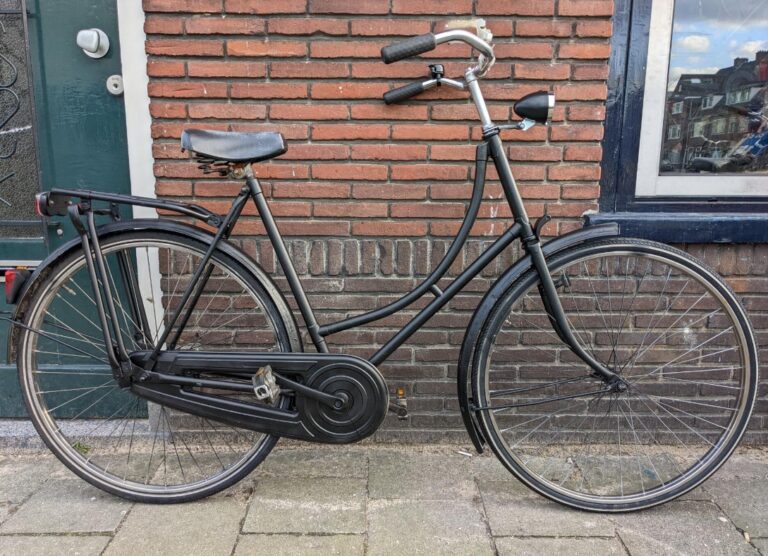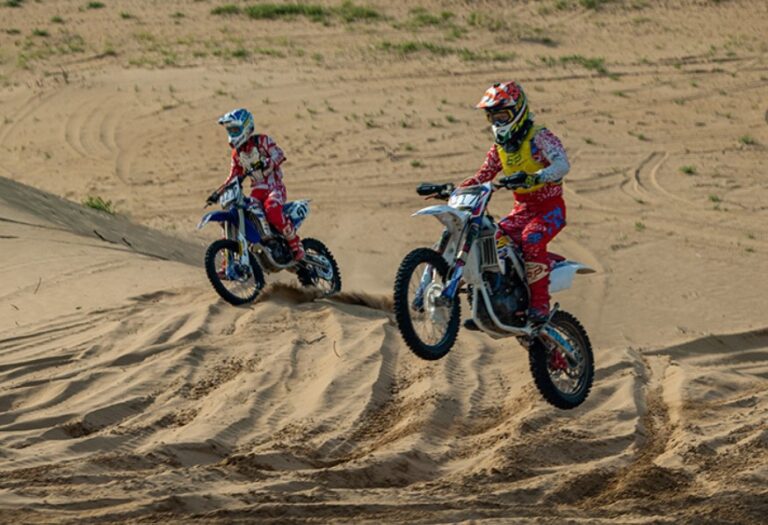Are Fat Tire Bikes Easier To Ride? Answered
Are you looking for Are Fat Tire Bikes Easier To Ride? Exploring the world of cycling introduces us to the intriguing concept of fat tire bikes, known for their distinctive wide tires and robust appearance. These bikes spark curiosity about their rideability, especially compared to traditional bicycles. This article delves into whether fat tire bikes offer an easier riding experience, examining their performance across various terrains and for riders of different skill levels.
Key Takeaways
- Fat tire bikes offer enhanced stability and traction, making them a forgiving option for beginners.
- They excel in challenging terrains, such as sand and snow, where traditional bikes might falter.
- The increased surface area of fat tires means more effort may be required on smooth, hard surfaces.
- Riders enjoy a comfortable experience, thanks to the natural cushioning effect of the tires.
Are Fat Tire Bikes Easier To Ride?
Yes, fat tire bikes are generally easier to ride on rough, uneven, or loose surfaces due to their enhanced stability, traction, and shock absorption. However, on smooth, hard surfaces, the increased rolling resistance can make them more challenging to pedal.

The Allure of Fat Tire Bikes
The Design Philosophy Behind Fat Tires
Fat tire bikes are engineered with a simple yet profound principle: the wider the tire, the more it can distribute the rider’s weight. This distribution allows for a remarkable improvement in stability and traction.
Riding a fat tire bike feels akin to floating, as the tires absorb much of the shock from uneven surfaces. This design philosophy caters not just to off-road adventurers but also to those seeking comfort on their rides.
Comparative Ease on Diverse Terrains
One of the most compelling attributes of fat tire bikes is their versatility. Whether it’s the soft sands of a beach or the slippery slopes of a snowy hill, these bikes handle with an ease that is unmatched by traditional bicycles.
The wide tires provide a larger contact surface with the ground, granting unparalleled grip and control in environments where standard bikes would struggle.
Riding Experience: Fat Tires vs. Traditional Tires
Stability and Control
The stability offered by fat tire bikes is unparalleled, particularly for novice riders. The fear of tipping over or losing control on slippery surfaces is greatly reduced. This stability, however, comes with a trade-off in terms of maneuverability. In tight turns or intricate trails, the heft of fat tires can be noticeable.
Effort and Efficiency
Riding a fat tire bike on soft, uneven terrain can be surprisingly efficient. However, on paved roads or hard trails, the increased friction demands more effort from the rider. This aspect is crucial for those considering a fat tire bike for daily commuting or long-distance rides on well-maintained paths.
The Health and Fitness Perspective
Workout Intensity
Fat tire biking offers a unique workout experience. The additional resistance from the tires means riders can expect a more intense workout, especially on flat or uphill terrains. This resistance translates to increased calorie burn and strength building, making fat-tire biking an excellent choice for fitness enthusiasts.
Accessibility for All Skill Levels
The forgiving nature of fat tire bikes makes them accessible to a wide range of skill levels. Beginners can enjoy the sport without the steep learning curve associated with more traditional bikes. For seasoned cyclists, the challenge of mastering different terrains provides a new dimension to their riding experience.
Is It Harder To Ride A Bike With Fat Tires?
Riding a bike with fat tires can present a different challenge compared to traditional bicycles, especially on paved or hard surfaces. The primary reason is the increased resistance due to the larger contact area of the tires with the ground.

This means that more effort is required to pedal and maintain speed, particularly on smooth roads where fat tires do not have the advantage of their design.
However, in off-road conditions such as sand, snow, or mud, fat tire bikes excel by providing greater stability and traction, making it easier to ride in these environments than on traditional bikes.
The challenge, therefore, is terrain-dependent. For those unaccustomed to the additional physical effort required on hard surfaces, it might initially seem harder to ride a fat tire bike. Yet, many adapt quickly to the difference and enjoy the benefits in off-road conditions.
What Are The Disadvantages Of A Fat Bike?
Fat bikes come with several disadvantages that potential buyers should consider. First, they are generally heavier than traditional mountain or road bikes due to the larger tires and robust frames necessary to support them.
This increased weight can make them more challenging to maneuver and transport. Secondly, wider tires can lead to higher rolling resistance, especially on paved surfaces, requiring more effort from the rider to achieve and maintain speed.
Another potential drawback is the cost; fat bikes and their components, such as tires and inner tubes, can be more expensive than those for standard bikes. Additionally, the unique size of fat bike tires might limit the availability of replacements or upgrades.
Finally, while excellent for snow, sand, and off-road trails, fat bikes may not offer the same efficiency or speed on the road, making them less versatile for riders seeking a bike for multiple uses.
Do Fat Tire Bikes Ride Smoother?
Yes, fat tire bikes generally offer a smoother ride, especially on uneven, rugged, or loose surfaces. The large volume and low pressure of fat tires allow them to absorb shocks from bumps, rocks, and other obstacles more effectively than thinner tires.
This natural cushioning effect reduces the impact on the rider, leading to a more comfortable experience over rough terrain. Furthermore, the wide tires provide increased stability, which can contribute to a sense of smoothness, particularly for beginners or those riding in challenging conditions.

While this smooth ride is a significant advantage in off-road or adverse conditions, it’s important to note that on smooth, hard surfaces, the benefits of fat tires in terms of ride smoothness might be less noticeable due to the increased rolling resistance.
Are Fat Bikes Good For Beginners?
Fat bikes are an excellent option for beginners due to their inherent stability and forgiving nature. The wide tires provide a substantial contact patch with the ground, offering more grip and reducing the chances of slipping or losing control, which can be particularly reassuring for new riders.
This stability allows beginners to focus more on learning how to handle and enjoy the ride, rather than worrying about falling. Additionally, the smooth ride provided by the fat tires can make off-road cycling less intimidating, encouraging beginners to explore a variety of terrains.
However, it’s worth noting that the increased weight and rolling resistance of fat bikes might require more effort to pedal, which could be challenging for some new cyclists. Despite this, the overall benefits of easier handling and comfort make fat bikes a popular choice among beginners.
Conclusion
Fat tire bikes stand out as a versatile and forgiving option for cyclists, particularly beneficial for off-road adventures and challenging terrains. Their design promotes ease of riding in conditions where traditional bikes might falter, offering a comfortable and stable journey.
While they may require more effort on paved roads, the trade-off is a broader range of accessible terrains, making fat tire bikes an excellent choice for both beginners and seasoned adventurers seeking new experiences.
Frequently Asked Questions
How do fat tire bikes impact the environment?
Fat tire bikes have a minimal environmental impact, similar to other bicycles. They offer a sustainable, non-polluting transportation option, especially for off-road and rough terrain cycling where motorized vehicles might cause more significant environmental damage. The ability to traverse sensitive habitats without leaving deep ruts or disturbing the ground as much as narrower tires might, makes them a conscientious choice for eco-friendly outdoor enthusiasts.
What are the health benefits of riding a fat tire bike?
Riding a fat tire bike offers numerous health benefits, including improved cardiovascular health, increased muscle strength, better balance, and enhanced endurance. The extra effort required to pedal fat tires over various terrains can lead to higher calorie burn, making it an effective workout. Additionally, the ability to ride on diverse surfaces encourages more frequent use, contributing to overall physical fitness.
Can fat tire bikes be used for long-distance rides?
Fat tire bikes can be used for long-distance rides, but riders should be prepared for a more strenuous effort compared to using a road or touring bike. The increased resistance from the wide tires means more energy is required, especially on paved surfaces. However, for those valuing comfort and the ability to tackle a variety of terrains over speed, fat tire bikes offer a unique long-distance touring experience.
How do you choose the right fat tire bike?
Choosing the right fat tire bike involves considering factors such as the intended use (e.g., off-road adventure, casual riding, snow biking), frame material (aluminum, steel, or carbon fiber), tire size, and suspension options. Budget also plays a significant role, as prices can vary widely based on features and build quality. Test-riding several models can help determine what feels most comfortable and suits your cycling needs.

Welcome to the exhilarating world of Matt Rex, a professional car racer turned renowned vehicle enthusiast. Immerse yourself in his captivating blog as he shares heart-pounding adventures, expert reviews, and valuable insights on cars, trucks, jets, and more. Fuel your passion for speed and discover the beauty of vehicles through Matt’s engaging stories and meticulous expertise. Join the ever-growing community of enthusiasts who find inspiration and expert advice in Matt Rex’s blog—a digital hub where the thrill of speed meets the pursuit of knowledge.




![Is An E-Bike A Motorized Vehicle? [Answered]](https://www.turbochaos.com/wp-content/uploads/2024/02/Is-An-E-Bike-A-Motorized-Vehicle.jpg)


